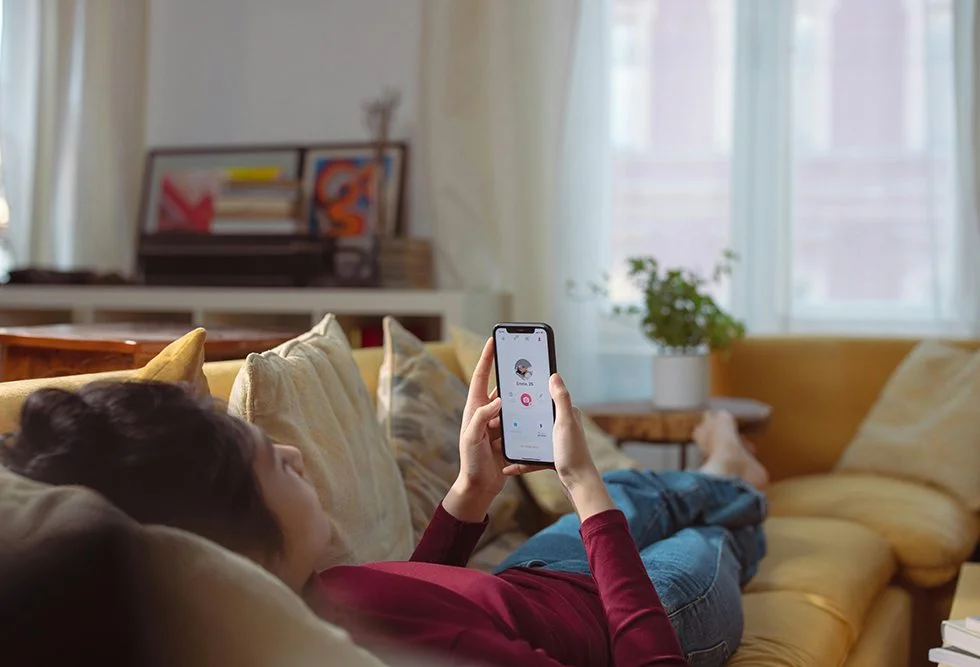Relationships • Compatibility
Anxious and Avoidant Couples and Their Phones
It is a measure of how quickly our phones have changed our lives that we are collectively still struggling to understand the powerful role they play in our relationships – and in particular, the special chaos and agony that can emerge from the tangled, falsely innocuous and yet in reality infinitely complicated business of what we too casually know as ‘texting’, especially within the dynamics of an anxious avoidant relationship.

For most of human history, contact between parted lovers had an elemental simplicity to it. One solemnly took one’s leave at the platform or harbourside in London or Amsterdam, Cape Town or Sydney – and then had no option other than to wait for weeks, possibly months or even years, to hear from the beloved ever again. It made for a deep but also unavoidable and entirely impersonal kind of sorrow. One was forced to miss the other at a rate and rhythm sharply constrained by geography and technology; by the length of time a coach took to negotiate the St Bernard Pass or a schooner to sail the Straits of Gibraltar. Worries were dampened by the implacable nature of the railway timetable or ocean currents. In the meantime, one simply got on with life, collected the harvest or reared the animals – and shed the odd quiet tear at bedtime.
The Curse of Constant Contact
The situation has been transformed for modern lovers – for better and very much for worse. By offering us constant, seamless contact, our phones have simultaneously opened us up to perpetually renewed opportunities for doubt, disconnection and anguished speculations as to the loyalty and interest of the other person. Exchanges have become live, ceaseless referenda on our worth and value. When divorce lawyers are nowadays called in and assets coldly split up, the true cause is often an irreconcilable, hard-to-mention drama about read receipts and the dance of three blinking dots.
The phone has in particular grown into a source of suffering for those pained characters known to psychological theory as the ‘anxiously attached’ on the one hand and the ‘avoidantly attached’ on the other. The former are dominated by a fear that they are never loved enough; the latter live in terror that they are about to lose their autonomy and independence to the demands of an all-engulfing partner. In these fevered anxious-avoidant couplings, one person is forever feeling abandoned; the other, overwhelmed and criticised.
The Anxious Avoidant Relationship on Screen
In the olden days, such tensions were tempered by technological limits. When there was only the occasional mail coach or carrier pigeon to deal with, an anxiously attached person could take silence at face value – while their avoidantly attached partner had only a single letter or two to write every month.
But now the anxious must always wonder, with mounting alarm, why they haven’t, at 18:03, received an answer to the three messages they sent at 17:56. Whereas the avoidant must wonder – with equal sadness and fury – why it can’t be enough to have told their partner they loved them fourteen hours ago and not to have looked at a single notification since then.
Part of the difficulty lies – as ever – in each party recognising the legitimacy of their pain and their right to make a polite, well-articulated fuss about so-called (but not in fact) ‘small things’.
Texting as an Emotional Mirror
In a better arranged world, lovers would formally be told that the business of texting sat upon a hugely significant area of their relationship. They wouldn’t be left to find out for themselves how much it can hurt to wait for a line overnight or, alternatively, how suffocating it can feel to have to type out a reply under emotional duress. They would be guided to acknowledge their distinctive patterns of communication and articulate them calmly and kindly from the first. Lovers on early dates might find themselves discussing texting styles with the earnestness with which they would otherwise consider plans for children or aspirations around career and money – covering how often they should message; what a comfortable waiting time might be; and how many kisses should fairly appear at the end of a goodbye.
There might at the same time be more readiness to explore the ways in which certain genuinely immature and unfinished sides of our personalities can show up in our texting habits. We might admit that there are times when we unfairly try to remedy a sense of emptiness by pressing for ever more contact, or almost will a partner to let us down in their texting habits, so that we can fall back on the peculiar comforts of loneliness and pessimism with which we are most at home. Just as we might, with equal bravery, admit to taking a certain cruel delight in not answering a partner we know desperately depends on us, as a way of sadistically exorcising a dependence on a parent who disappointed us as toddlers.
As with so many new technologies, our phones surreptitiously worsen our already existing weaknesses. Like processed sugar for the greedy or porn for the lustful, they play havoc with the minds of the insecurely or defensively attached – and require equal foresight and self-protection. The road to living more easily around our phones begins with a frank acknowledgement of the momentous challenges they present us with. We should be compassionate enough with ourselves to appreciate what an achievement it is to enjoy a calm texting life with a partner – especially within an anxious avoidant relationship – and how much careful work we may still need to do to achieve one.


























